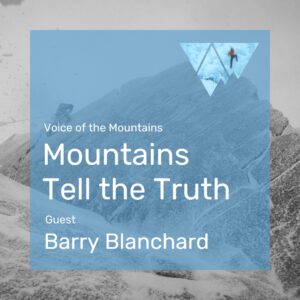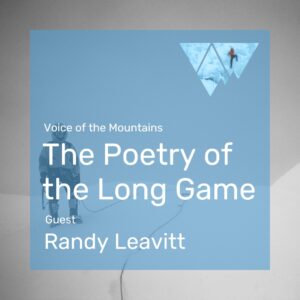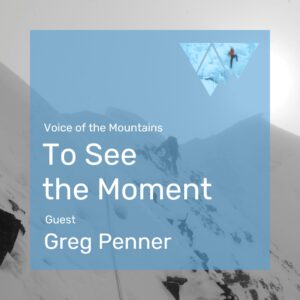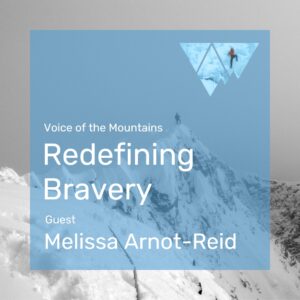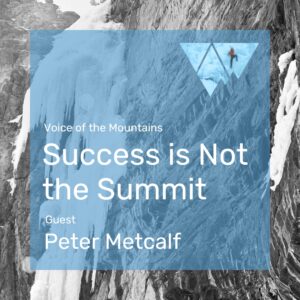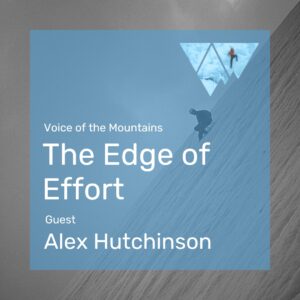Essay: To See the Moment
By Steve House
What can an Uphill Athlete learn from someone whose primary job is making decisions that ripple across millions of lives? You probably don’t associate the boardroom with the white room experience when lost in the fog on a glacier or crossing a stormy mountain pass. One is climate-controlled, saturated with numbers, and full of stakeholders. The other is raw, exposed, silent, stripped down to breath and footing.
The man I spoke with, Greg Penner, lives fully in both.
Greg is the Chairman of Walmart, one of the most complex companies in the world and his voice impacts not only you and me, but a global legacy created by his family. He’s also the CEO of the Denver Broncos and sits on multiple corporate boards. And he’s also hiked and skied the Highlands Bowl hundreds of times, climbed Ama Dablam and Everest, been turned back from Denali, and regularly trains for and completes endurance events. He’s not an observer of the mountain world; he’s out there, on the skin track with you and me.
So I asked myself: what does he see from that vantage point that the rest of us might miss?
Decision-Making Under Pressure
High on Everest, Greg’s team faced a critical moment when multiple oxygen regulator failures occurred just below the summit. The obvious move was to turn around. But instead of reacting, they paused. Reassessed. Took their time. Then, when a new opportunity presented itself, they regrouped and successfully summited on a second attempt together, more efficiently, with more margin.
In telling this story, Greg didn’t frame it as heroic. He framed it as a process.
It’s the same process he described using in high-stakes business decisions. Assess the risk. Gather voices, especially dissenting ones. Weigh the inputs. Then act decisively.
The lesson here isn’t just about methods. It’s about mindset. Whether you’re at 28,000 feet or facing a board decision that affects 2.1 million employees, the key isn’t to avoid pressure. It’s about recognizing it early, holding steady, and moving with clarity and intent.
The Power of Patterns
Greg talked a lot about reps. Not just training reps—but repetitions of meaningful experience across multiple domains: racing, parenting, leading, climbing. What this gives him, he says, is pattern recognition. You see something that doesn’t feel right in a team dynamic? You’ve likely seen it before, in another context.
In the mountains, pattern recognition often equates to safety. In business, it’s the difference between an early course correction and a slow-motion collapse.
For us, as everyday athletes and leaders of our own lives, this is a useful reminder: diversity of experience matters. Your endurance training teaches you something about stress management. Your alpine trips teach you something about resilience. These things layer. And over time, they make you faster at seeing what needs to happen—whether that’s changing a failing partnership or realizing you’re under-recovering in training.
The Cost of Getting People Wrong
We both agreed: whether in business or in the mountains, the most important decisions you make are people decisions.
Greg echoed the familiar Jim Collins line: “get the right people on the bus.” But he added that the most painful failures in his career, both on mountains and in business, came not from poor planning, but from tolerating misaligned people for too long.
We all know this in training partners. A good partner brings out your best. A bad one drains your energy or puts you at risk. But we often ignore this truth in other areas of life. We cling to co-workers, collaborators, even social groups that don’t share our values or approach. And we pay the price in morale, in progress, and in outcome.
Greg’s advice was direct: don’t wait. You already know. Fix it early.
Privilege, Merit, and Responsibility
We also talked openly about privilege. Greg acknowledged that climbing Everest, running a multi-billion-dollar company, or even skiing in Aspen regularly, isn’t accessible to most. But he didn’t dodge that reality. Instead, he emphasized responsibility and made a deliberate effort to give back in ways that match one’s unique position.
That doesn’t mean just writing checks. It means using whatever resources, reach, or skills you have to do something useful. For Greg, that means investing in concussion-reduction gear for high school football players. For me, it means creating Uphill Athlete and this podcast. For you, it might mean leading a local trail group, mentoring a new climber, or sharing what you’ve learned from your own struggle.
My takeaway: we’re all privileged in some way. The question is how we acknowledge our privilege and what we do with it.
Different Viewpoints, Same Mountain
So what can a mountain athlete learn from a corporate CEO?
It turns out: quite a bit. Not because the scale of his decisions is larger, but because the structure of his decision-making is refined. Because his experiences reflect back something about our own. He’s not trying to win the summit selfie game. He’s trying to live fully across multiple disciplines and bring his best self to each.
Greg is an Uphill Athlete. But more than that, he’s a case study in how endurance, risk, and human connection show up in every arena if we’re willing to see the patterns, take the reps, and act with care.
In the end, that’s what we’re all training for. The clarity to see the moment we’re in, the courage to move toward something better, and the humility to know we’re not there yet.
LISTEN TO THE EPISODE:
Exploring the poetic soul of the mountains.
Voice of the Mountains explores the mental and emotional adventures found in discovering who we are and what we’re capable of. Here we engage in self-reflection and humility, and embrace the beauty and struggle of the alpine experience equally.
Read More
Season One
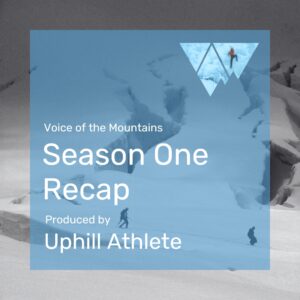
Essay: Season One Recap

Essay: The Currency of Toil
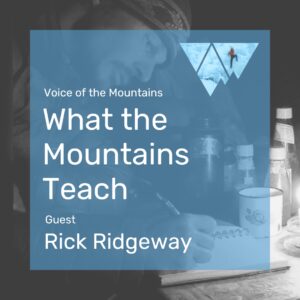
Essay: What the Mountains Teach
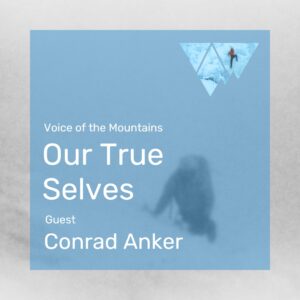
Essay: Our True Selves
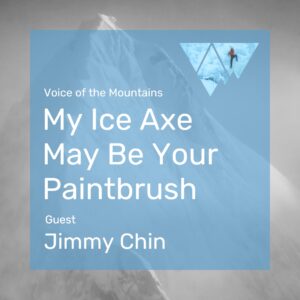
Essay: My Ice Axe May Be Your Paintbrush
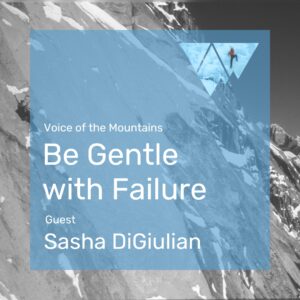
Essay: Be Gentle with Failure
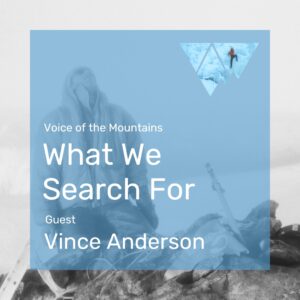
Essay: What We Search For
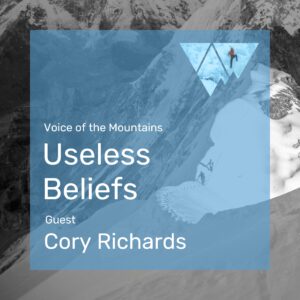
Essay: Useless Beliefs
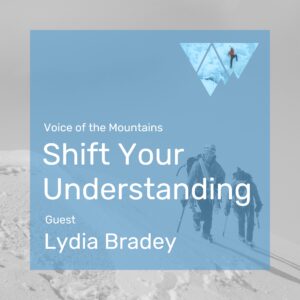
Essay: Shift Your Understanding
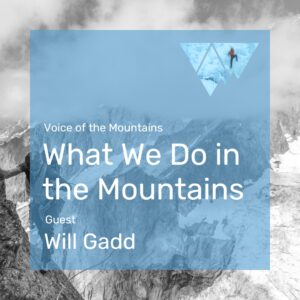
Essay: What We Do in the Mountains
